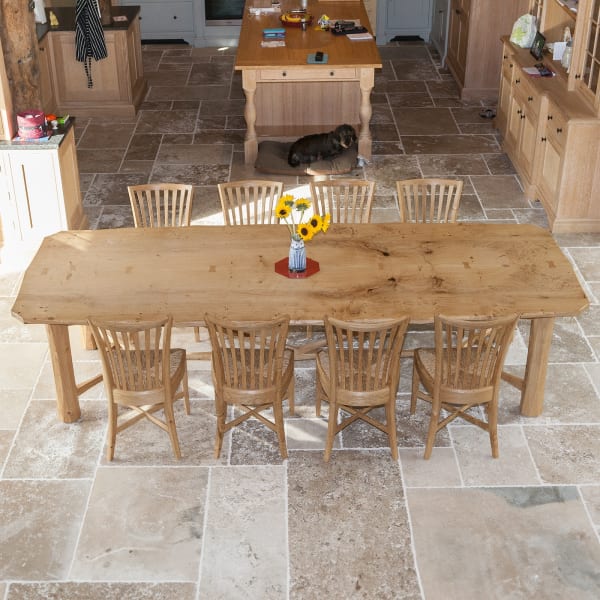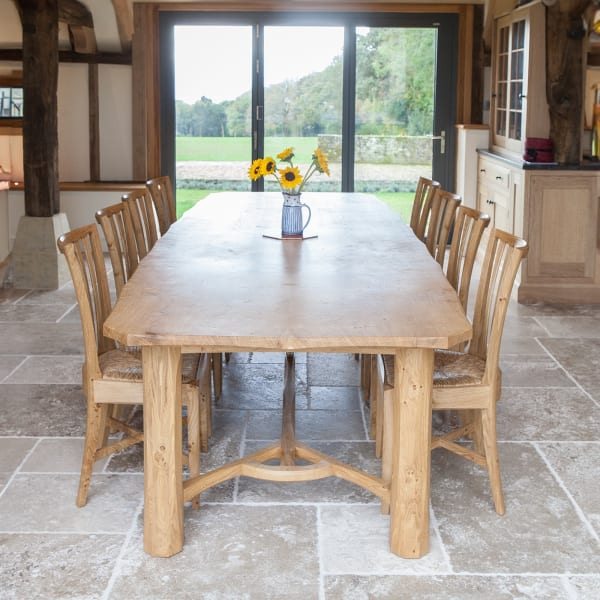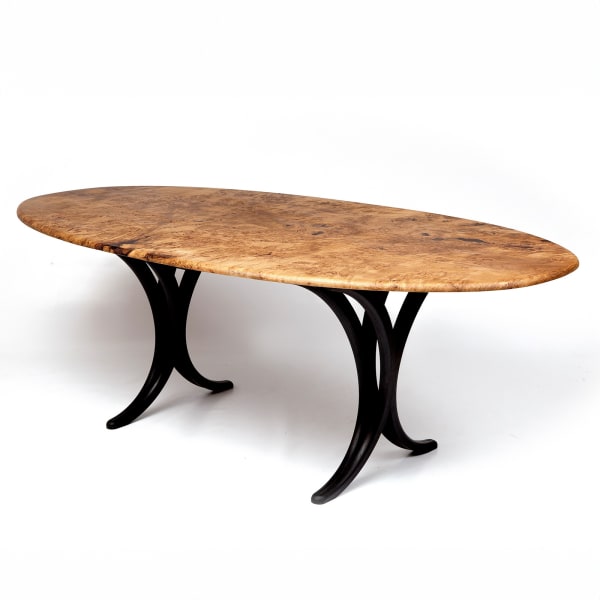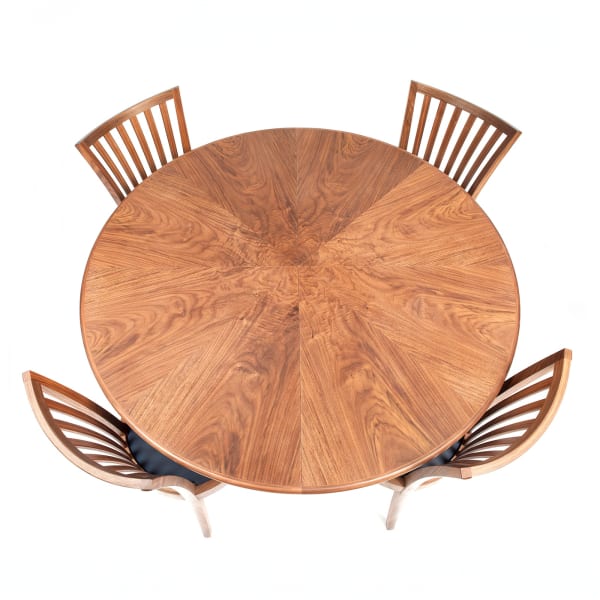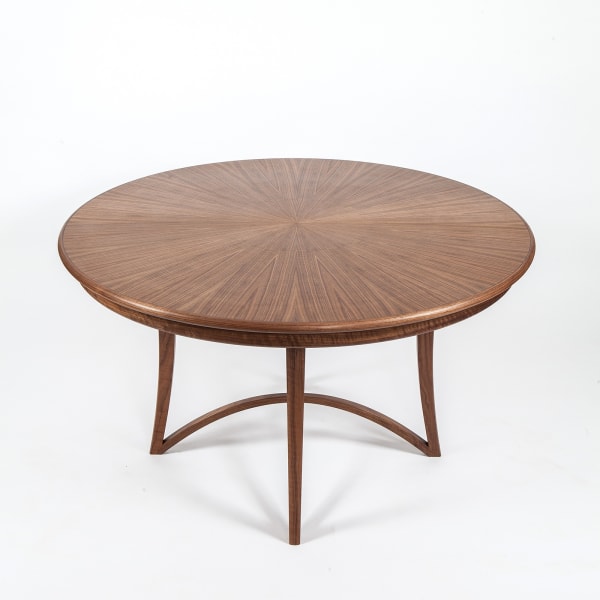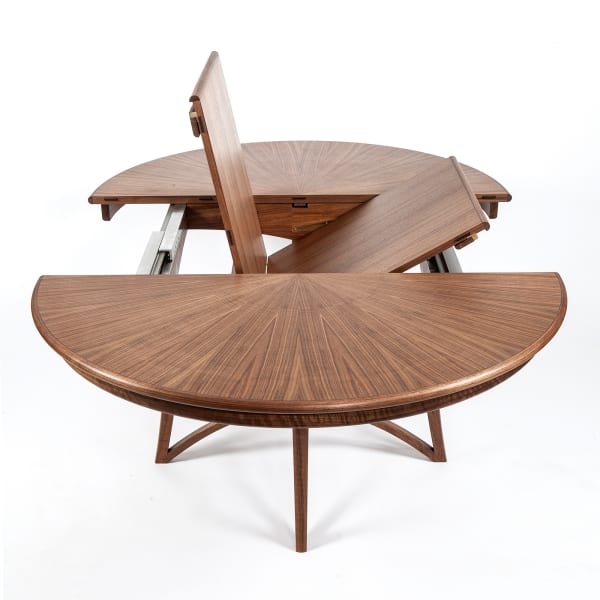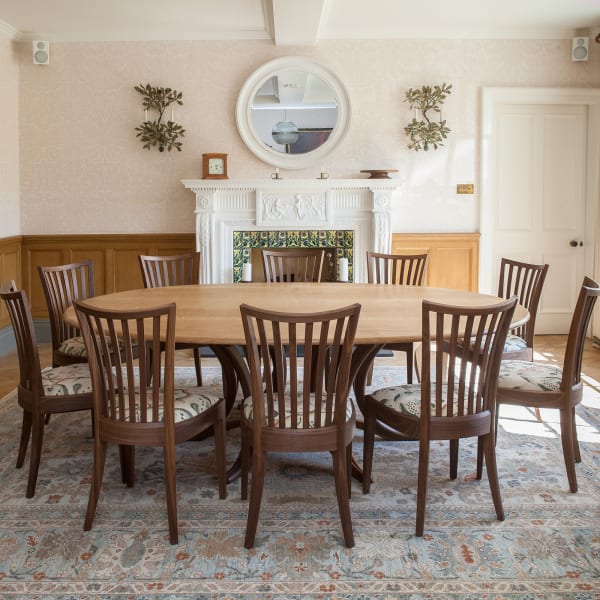-
-

The rectangular oak kitchen table shown here was made with timber from a tree felled on the clients’ land. The two widest boards from the centre of the trunk were used to make the table top.
-

The design of the under-structure of the table was inspired by Arts and Crafts ‘hay-rake stretcher’ tables. This design gives good legroom to everyone sat at the table.
-

The Epicormic dining table has a burr oak top and a scorched oak understructure.
-

This table-top has a starburst veneer pattern.
-

This table can be extended quickly and easily.
-

The 'butterfly' leaf is stored within the table.
-

A dining table that seats ten.
-

This walnut extending table allowed the clients to comfortably accommodate a large number of diners. This was only possible because the oval shape was proportioned to suit the dining room for which it was made.
-
Dining Tables
When we are asked to make a dining table we take care to fulfil the client’s requirements. James Ryan, the Barnsley Workshop designer, will make a measured plan of the client’s room. He notes the position of doorways, openings, windows and furniture, and tries to ensure diners will not be forced to tuck in their elbows or to squeeze in to let someone pass. These considerations help determine the ideal shape of a table for a particular room. This process helps the client decide whether they would prefer a fixed or extending dining table.
